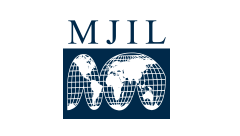Abstract
The illicit trade in cultural property is a global phenomenon, powered by criminal networks and smuggling trains that sacrifice local culture for the black market of the art world. Headlines featuring the Islamic State’s lucrative exchange in stolen cultural property, among other incidents, have raised the profile of the illicit cultural property trade on the global stage. Developing countries, as the most prominent source countries of cultural property, are particularly at risk. Existing scholarship has searched for a solution to this crisis, suggesting a new international treaty to protect cultural property or recommending the utilization of adjacent legal fields. However, these solutions overlook the ready benefits of two existing international treaties on cultural property, the United Nations Educational, Scientific and Cultural Organization (“UNESCO”) and United Nations International Institute for the Unification of Private Law (“UNIDROIT”) Conventions.
While the UNESCO and UNIDROIT Conventions do not provide an absolute solution to the illicit cultural property trade, they are accessible and underutilized options that are particularly calibrated to assist developing countries. Increased ratification of the UNESCO and UNIDROIT Conventions would grant source country States Parties the enforcement benefits of the import regulations and domestic court systems of market country States Parties, and the strength of the Conventions would rise as the number of signatories increases. The costs imposed on developing country signatories are deliberately low to aid them in protection and recovery. Furthermore, the adoption of these two Conventions does not constrain States Parties from contemplating and implementing additional mechanisms to further protect cultural property. The UNESCO and UNIDROIT Conventions thus offer ready, underutilized options for developing countries to better protect their cultural property.
Recommended Citation
Michael P. Goodyear,
Keeping the Barbarians at the Gates: The Promise of the UNESCO and UNIDROIT Conventions for Developing Countries,
41
Mich. J. Int'l L.
581
(2020).
Available at:
https://repository.law.umich.edu/mjil/vol41/iss3/5

